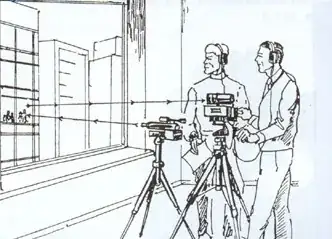Laser Microphones like any other eavesdropping equipment has pros and cons.
Pros
- Can be invisible if using infra-red (IR) beam
- Will not be detected with typical radio frequency (RF) finders
- Can be turned on/off at will - avoiding further detections
Cons
- The beam (laser or other) needs to be in within line of sight of the target
- Is affected by rain / snow (more explanation below)
- IR beam can be easily detected using the Front-Facing Camera on an iPhone
Recent History
These devices were all the rage in the 90s - you can see this by seeing the style of websites selling them (here and here are examples)
For a while they fell out of favor with the rise of networking/computer eavesdropping technologies which provided more value per dollar.
Recently though, they have been having a semi-resurgence with anti terror units having use for them. Here is an example of one such company marketing it.
Laser Microphone History
The earliest recording of a "Laser" microphone is by an inventor named Léon Theremin.
He created something named the Buran eavesdropping system which essentially used an low powered infra-red beam to detect vibrations made by sound-waves. He demonstrated this device on a pane of glass.
Operating Principles
Laser microphones work by shining a light on an object that vibrates (think: glass, plastic cup etc.) When someone speaks (or any other noise is introduced) it pushes the air around it causing the object that the laser is shining on to vibrate.
When the object vibrates it causes minute differences in the distance traveled by the light as it reflects back to a receiver. These difference are detected using something called Interferometry.
These signals are then translated back into sound which allow you to hear what is going on.
Mechanics - the moving parts
Here are the pieces involved to make this work:
Laser beam
This is the device that will 'shine a light' on the object in the room (or on the window. Modern versions of these systems can work at distances of 500 meters
Reciever
This is the device that picks up the reflection of the beam (typically placed at about a 90 degree angle to the originating beam)
This processes the light signal and sends it to the next piece of electronics for processing.
Demodulator
This is the device that actually turns it into sound for you. This device can be controlled with software to remove noises such as wind etc. to provide a clearer sample.
A Laser Microphone can be pretty effective if used properly and in ideal conditions
But remember that the information you are looking for may be in a digital device and not in voice spoken format.
Countermeasures
Detecting a Laser microphone is relatively easy in many cases (mentioned earlier in the answer)
Vibrating the windows is not always effective as software can (and has) been written to remove the frequency from the vibrating noises.
However, one can create a device that vibrates the windows with frequencies that used typically in human speech. Such a device could if done correctly render the laser microphone useless.
Known cases of use
Though there isn't any official documentation of its use, there are some places that discuss its use during the cold war (here is an example).
There has also been speculation whether government agencies used such a device during the Snowden investigation.
Usage Limitations
In order for this system to work you need line-of-sight to an object that vibrates.
This object obviously has to be within reasonable distance to the source of the noise.
Rain, Snow or any other weather that interferes with an IR beam would affect the ability to eavesdrop.
One last thing to mention is the need for both the shining laser and the receiver to be stationary the whole time and not move. Usually, this is achieved by using a pair of tripods (like in the image posted in the question)
Some interesting links
http://www.instructables.com/id/Laser-Surveillance-System-for-under-%2420/
http://hackaday.com/2010/09/25/laser-mic-makes-eavesdropping-remarkably-simple/
http://lifehacker.com/5961503/build-a-laser-microphone-to-eavesdrop-on-conversations-across-the-street
http://www.lucidscience.com/pro-laser%20spy%20device-1.aspx
https://web.archive.org/web/20180305115138/http://www.williamson-labs.com/laser-mic.htm
